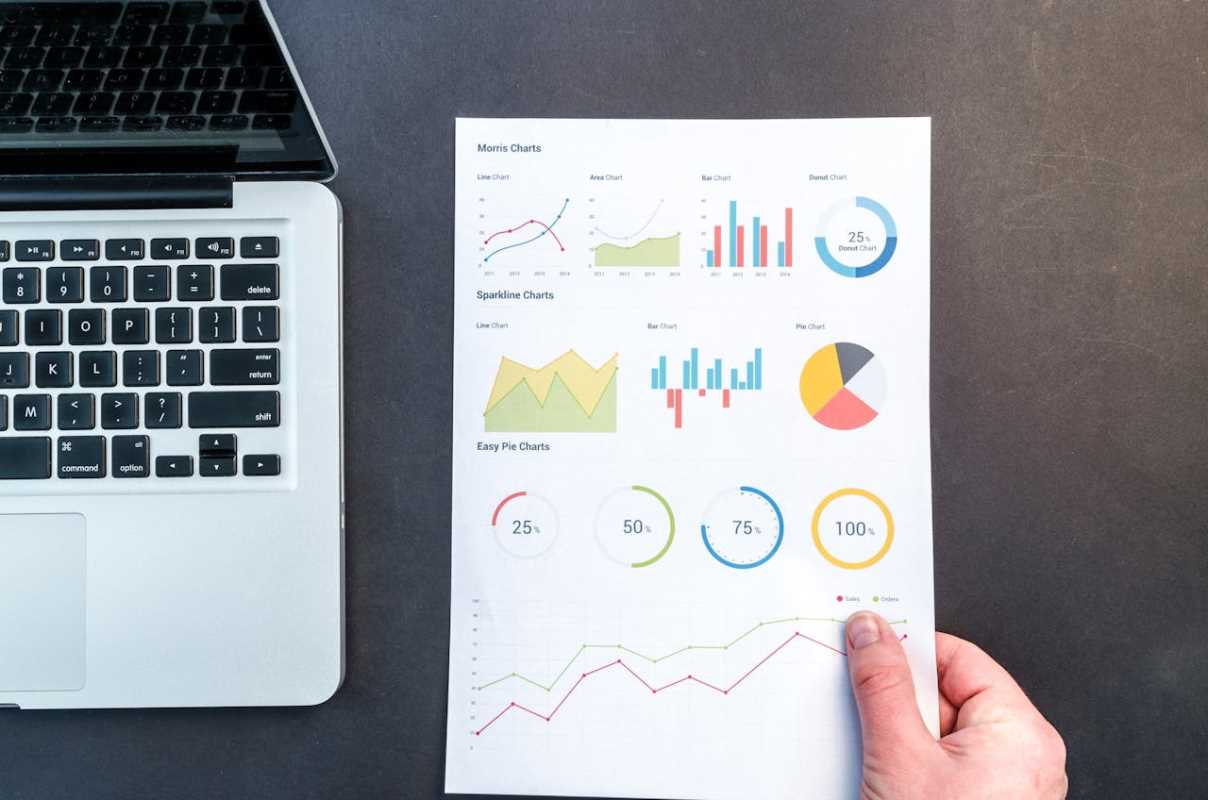Running an e-commerce business means juggling countless moving parts, from marketing campaigns to shipping logistics. Behind all that activity, a solid financial plan is essential. Creating an accurate budget and forecast is the key to navigating the unique financial landscape of online retail, ensuring you have the cash flow to grow and thrive.
The Unique Financial World of E-Commerce
Budgeting for an online store is different from budgeting for a traditional brick-and-mortar business. The revenue streams, cost structures, and operational challenges are unique to the digital marketplace. While a physical store worries about rent and foot traffic, an e-commerce company obsesses over customer acquisition costs and conversion rates.
Key differences include:
- Variable Marketing Spend: Digital advertising costs can change daily.
- Complex Inventory Management: Balancing stock levels to meet demand without overspending is a major challenge.
- Global Customer Base: Selling across borders introduces currency fluctuations and varied shipping costs.
A 2023 report noted that poor cash flow management is a primary reason why e-commerce businesses fail. A precise budget and forecast act as your financial GPS, helping you steer clear of these dangers.
Core Challenges in E-Commerce Budgeting
Building a financial plan requires understanding the specific hurdles that online retailers face. These challenges can make or break your profitability.
1. Volatile Customer Acquisition Costs (CAC)
Your biggest expense is often acquiring new customers. E-commerce businesses rely heavily on digital marketing channels like Google Ads, Facebook, and TikTok. The cost of these ads is not fixed. It fluctuates based on competition, seasonality, and algorithm changes on the platforms. A successful ad campaign one week could become unprofitable the next. Budgeting for this volatility is a major headache.
2. The Inventory Tightrope Walk
Inventory is a double-edged sword. You need enough product to meet customer demand, especially during peak seasons. However, holding too much inventory ties up cash that could be used for marketing or other growth initiatives. It also increases storage costs and the risk of products becoming obsolete. This balancing act, known as inventory management, is a critical part of financial planning.
3. Predicting Seasonality and Demand
E-commerce sales often follow a seasonal pattern. A company selling swimwear will see a spike in the spring, while a gift shop will have its best months leading up to the holidays. Forecasting this demand accurately is crucial. If you overestimate demand, you are left with excess inventory. If you underestimate it, you miss out on sales and disappoint customers.
4. Managing Returns and Refunds
When customers cannot touch a product before buying, returns are inevitable. The average e-commerce return rate hovers between 20% and 30%. Your budget must account for this. Returns not only mean lost revenue but also incur additional costs for shipping and restocking. Ignoring returns in your forecast will lead to a significant overstatement of your net revenue.
Building Your E-Commerce Budget: A Step-by-Step Guide
A good budget provides a clear picture of your financial health. It helps you make informed spending decisions and track your progress toward your goals.
Step 1: Forecast Your Sales Revenue
Your sales forecast is the foundation of your entire budget. Start by looking at historical data. Analyze your sales month by month for the past year to identify seasonal trends.
Next, factor in your growth assumptions. Are you planning to launch a major marketing campaign or enter a new market? Model how these initiatives might impact your sales. Be realistic. It is better to have a conservative forecast that you exceed than an overly optimistic one that you miss.
Step 2: Calculate Your Cost of Goods Sold (COGS)
COGS represents the direct costs of selling your products. This includes the cost of the product itself, shipping from your supplier, and any import duties. Your Gross Profit is your Sales Revenue minus your COGS. This is a critical metric that shows how profitable your core business is before accounting for other expenses.
Example:
- You sell a product for $100.
- It costs you $30 to purchase from the manufacturer.
- Shipping from the supplier costs $5 per unit.
- Your COGS is $35, and your Gross Profit is $65 per unit.
Step 3: Itemize Your Operating Expenses
Operating expenses are the costs of running your business that are not directly tied to a specific product. These can be broken down into several categories:
- Marketing & Advertising: Your budget for Google Ads, social media marketing, email campaigns, and influencer collaborations. This is often a percentage of your total revenue.
- Shipping & Fulfillment: The costs to pack and ship orders to your customers, including boxes, tape, and postage.
- Software & Subscriptions: Your monthly fees for your e-commerce platform (e.g., Shopify), email marketing tools, and other software.
- Payroll: Salaries and benefits for your employees or payments to freelance contractors.
- Transaction Fees: The fees charged by payment processors like Stripe and PayPal on every sale.
Step 4: Put It All Together
Once you have all the pieces, you can build your profit and loss (P&L) statement.
Revenue - COGS = Gross Profit
Gross Profit - Operating Expenses = Net Profit (or Loss)
This final number shows whether your business is making money. A detailed budget should project this P&L on a monthly basis for at least the next 12 months.
Strategies for Smarter Forecasting
A budget looks at the past and present, while a forecast looks to the future. Here are some strategies to make your e-commerce forecasts more accurate.
Use Rolling Forecasts
Instead of creating a static annual budget, use a rolling forecast. A rolling forecast is continuously updated throughout the year. For example, at the end of each month, you add a new month to the end of your forecast. This makes your financial plan a living document that adapts to changing business conditions.
Focus on Unit Economics
Drill down into the numbers for a single sale. Understand your Customer Acquisition Cost (CAC) and your Customer Lifetime Value (LTV). LTV is the total amount of money a customer is expected to spend with your business over their entire relationship with you. A healthy e-commerce business has an LTV that is at least three times its CAC. This LTV:CAC ratio is a powerful forecasting tool.
Scenario Planning
What would happen if your main marketing channel became 20% more expensive? What if a supply chain disruption delayed a shipment of your best-selling product? Scenario planning involves creating multiple versions of your forecast based on different potential outcomes (e.g., a best-case, worst-case, and most-likely case). This helps you prepare for uncertainty and make more resilient plans.
Your Financial Roadmap to Success
Budgeting and forecasting for an e-commerce company is a complex but essential discipline. It forces you to understand every aspect of your business, from marketing funnels to supply chains. By embracing the challenges and implementing a structured approach, you can create a financial plan that does more than just track numbers.
This plan becomes your roadmap, guiding your decisions and helping you build a profitable, sustainable, and scalable online business.
 (Image via
(Image via

.jpg)



